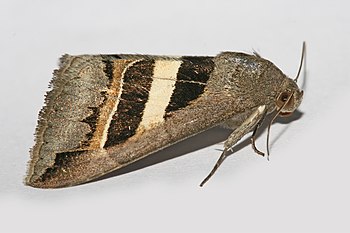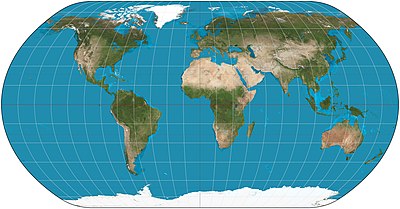 Edward Scriven's engraving of John Masey Wright's illustration to Robert Burns' poem "Halloween". First published in 1786, the poem is included in the Kilmarnock volume and is one of Burns' longer poems.
Edward Scriven's engraving of John Masey Wright's illustration to Robert Burns' poem "Halloween". First published in 1786, the poem is included in the Kilmarnock volume and is one of Burns' longer poems.31 Oct 2014
Halloween
 Edward Scriven's engraving of John Masey Wright's illustration to Robert Burns' poem "Halloween". First published in 1786, the poem is included in the Kilmarnock volume and is one of Burns' longer poems.
Edward Scriven's engraving of John Masey Wright's illustration to Robert Burns' poem "Halloween". First published in 1786, the poem is included in the Kilmarnock volume and is one of Burns' longer poems.30 Oct 2014
Grammodes Geometrica
 Grammodes geometrica is a species of moth in the genus Grammodes. It is found from the Mediterranean east through the Asian and Australasian tropics.
Grammodes geometrica is a species of moth in the genus Grammodes. It is found from the Mediterranean east through the Asian and Australasian tropics.29 Oct 2014
Mugal Emperor Humayun
27 Oct 2014
Sella Group
 An evening view of the Sella group, a plateau-shaped massifin the Dolomites mountains of northern Italy. The highest peak isPiz Boè at 3,151 m (10,338 ft) above sea level. Visible here are Piz Ciavazes on the right and Torri del Sella on the left.
An evening view of the Sella group, a plateau-shaped massifin the Dolomites mountains of northern Italy. The highest peak isPiz Boè at 3,151 m (10,338 ft) above sea level. Visible here are Piz Ciavazes on the right and Torri del Sella on the left.Yacht Racing
 Yacht racing is a sport in which yachts and larger sailboats are raced. Modern yacht racing emerged in the 18th century, and attempts to standardize rules began in the 1800s. Depicted here is the start of the 2013 Cabo San Lucas Race, in which the yachts are raced from Newport Beach, California, to Cabo San Lucas, Mexico.
Yacht racing is a sport in which yachts and larger sailboats are raced. Modern yacht racing emerged in the 18th century, and attempts to standardize rules began in the 1800s. Depicted here is the start of the 2013 Cabo San Lucas Race, in which the yachts are raced from Newport Beach, California, to Cabo San Lucas, Mexico.26 Oct 2014
High-Density Polyethylene
 The installation of high-density polyethylene (HDPE) pipe in a storm drain project in Mexico, photographed in 2012. HDPE is a polyethylene thermoplastic made from petroleum that is known for its high strength to density ratio. It is commonly used in the production of plastic bottles, corrosion-resistant piping, and plastic lumber.
The installation of high-density polyethylene (HDPE) pipe in a storm drain project in Mexico, photographed in 2012. HDPE is a polyethylene thermoplastic made from petroleum that is known for its high strength to density ratio. It is commonly used in the production of plastic bottles, corrosion-resistant piping, and plastic lumber.24 Oct 2014
Northern Carmine Bee-eater
 The northern carmine bee-eater (Merops nubicus) is a near passerine bird in the bee-eater family. Native to Africa, the species is predominantly carmine in colour. Its diet consists mostly of bees and other flying insects.
The northern carmine bee-eater (Merops nubicus) is a near passerine bird in the bee-eater family. Native to Africa, the species is predominantly carmine in colour. Its diet consists mostly of bees and other flying insects.22 Oct 2014
Fantine
 Fantine, a character in Victor Hugo's novel Les Misérables, in an 1886 painting by Margaret Bernadine Hall. In the novel, Fantine is a young orphan girl who is impregnated by a rich student, who then abandons her and their child Cosette. Forced by her poverty to become a prostitute, Fantine sacrifices her youth, beauty, and health in order to raise her daughter. After she dies, Cosette is raised by Jean Valjean.
Fantine, a character in Victor Hugo's novel Les Misérables, in an 1886 painting by Margaret Bernadine Hall. In the novel, Fantine is a young orphan girl who is impregnated by a rich student, who then abandons her and their child Cosette. Forced by her poverty to become a prostitute, Fantine sacrifices her youth, beauty, and health in order to raise her daughter. After she dies, Cosette is raised by Jean Valjean.
Fantine has been described as the "quintessential mother" whose sacrifice serves the good of her child, and identified with "the saved and saintly prostitute". She has been depicted in numerous adaptations of the novel, including the musical and the2012 film (in which she was portrayed by Anne Hathaway).
21 Oct 2014
Indian Elephant
.jpg/350px-Elephas_maximus_(Bandipur).jpg) A male Indian elephant (Elephas maximus indicus) in Bandipur National Park, Karnataka. First described by Georges Cuvier in 1798, this subspecies of Asian elephant is considered endangered owing to large population declines since the mid-20th century.
A male Indian elephant (Elephas maximus indicus) in Bandipur National Park, Karnataka. First described by Georges Cuvier in 1798, this subspecies of Asian elephant is considered endangered owing to large population declines since the mid-20th century.20 Oct 2014
Zygoballus rufipes
A female Zygoballus rufipes, a species of jumping spider found from Central America through Canada. First described in 1885 by George and Elizabeth Peckham, there were initially thought to be two species (Z. bettini to the north and Z. rufipes to the south), but they have since been synonymized.
19 Oct 2014
Sunflower
14 Oct 2014
Natural Earth projection
A map of the world using the Natural Earth projection, a pseudocylindrical projection which is neither conformal nor equal-area. The projection was designed by Tom Patterson, an American cartographer with the National Park Service who has developed several open-source tools and base maps for cartographers.
This map is a derivative of NASA's Blue Marble summer month composite, with oceans lightened to enhance legibility and contrast.
Mollusc
 An anatomical diagram of a hypothetical ancestral mollusc. Whether or not such a creature ever existed is a subject of debate among evolutionary biologists, but the construct or bauplan depicted here includes most of the physical attributes likely present in some form of shared molluscan ancestor, including a nervous system which ishypoathroid, an unsegmented, bilaterally symmetrical body, a single domed shell, and with organs occurring either singly or in pairs (i.e., with no metamerism).
An anatomical diagram of a hypothetical ancestral mollusc. Whether or not such a creature ever existed is a subject of debate among evolutionary biologists, but the construct or bauplan depicted here includes most of the physical attributes likely present in some form of shared molluscan ancestor, including a nervous system which ishypoathroid, an unsegmented, bilaterally symmetrical body, a single domed shell, and with organs occurring either singly or in pairs (i.e., with no metamerism).
Biologists began drawing bauplans of molluscs in the late 19th century in an attempt to summarize the common features of the molluscan phylum. As pictures, however, these illustrations sometimes may actually serve to constrain theoretical understanding rather than aid it, especially given the absence of any specific fossil evidence of such a creature having existed. Nevertheless, depictions continue to be made and revised: organs become rearranged, emphases shift and settle, and the pictures themselves become a subject of analysis (or meta-analysis) quite apart from their completeness or accuracy as scientific works.
11 Oct 2014
White-necked petrel
 The white-necked petrel(Pterodroma cervicalis) is aseabird in the familyProcellariidae; adults measure some 43 centimetres (17 in) in length, with a wingspan of 95–105 centimetres (37–41 in). Although the species is found in much of the South Pacific, it breeds on only three islands and is thus considered vulnerable by theIUCN.
The white-necked petrel(Pterodroma cervicalis) is aseabird in the familyProcellariidae; adults measure some 43 centimetres (17 in) in length, with a wingspan of 95–105 centimetres (37–41 in). Although the species is found in much of the South Pacific, it breeds on only three islands and is thus considered vulnerable by theIUCN.Inupiat
.jpg/350px-Inupiat_Family_from_Noatak%2C_Alaska%2C_1929%2C_Edward_S._Curtis_(restored).jpg) A family portrait of an Inupiat mother, father, and son, photographed in Noatak, Alaska, by Edward S. Curtis circa 1929. The Inupiat are an Alaska Native people whose traditional territory spans from the Norton Sound on the Bering Sea to the Canadian border. At the time this picture was taken, most were living in coastal areas, having migrated there during a period of starvation and an influenza epidemic.
A family portrait of an Inupiat mother, father, and son, photographed in Noatak, Alaska, by Edward S. Curtis circa 1929. The Inupiat are an Alaska Native people whose traditional territory spans from the Norton Sound on the Bering Sea to the Canadian border. At the time this picture was taken, most were living in coastal areas, having migrated there during a period of starvation and an influenza epidemic.8 Oct 2014
CCockroach
Subscribe to:
Comments (Atom)

